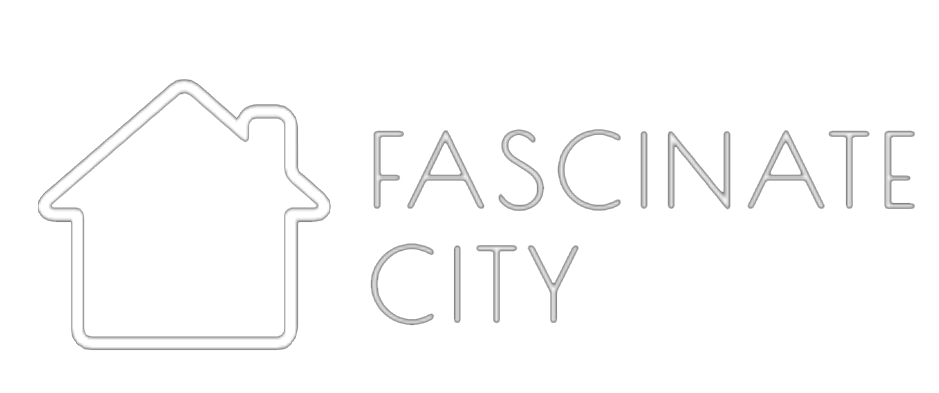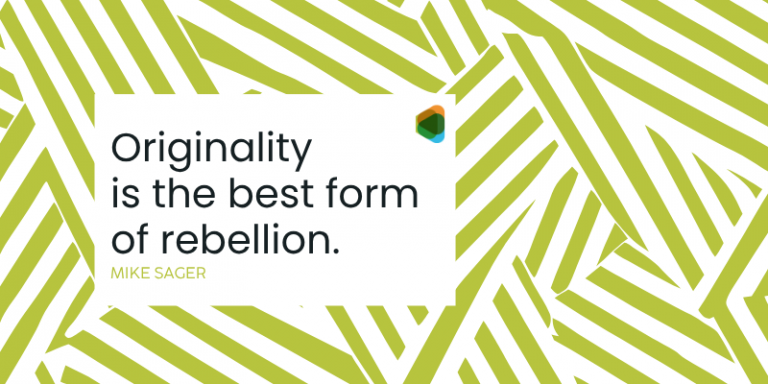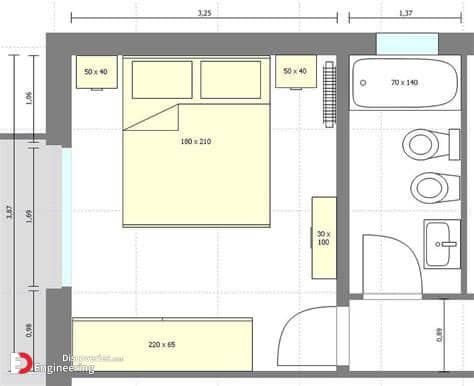Vinyl siding isn’t just about protection; it’s a big part of your home’s personality. The Vinyl Siding colors you choose can shape how your house is perceived from the street and how it fits in with its surroundings. A good match can make your home feel more welcoming and up-to-date, and even increase its value if you’re considering selling down the road.
Curb appeal is one of the first things buyers notice, and siding color plays a major role. A well-chosen color can highlight architectural details, make small homes seem bigger, and give older homes a fresh look. On the flip side, the wrong color might clash with your roof, landscaping, or the overall character of the neighborhood.
Modern vinyl siding comes in a wide range of shades, from clean neutrals to bold, deep tones. Whether you’re into the crisp look of white or a dramatic navy, there’s likely a shade that matches your taste and your home’s style.
How to Choose a Vinyl Siding Color
Choosing the right vinyl siding paint colors isn’t just about picking something you like on a color card. There are a few practical points to keep in mind:
1. Home Style
Different home designs tend to work better with certain colors. For example:
Colonial homes look great in traditional whites, deep reds, or dark blues.
Modern styles may lean toward cool grays, black, or minimalist tones.
Farmhouse and cottage homes usually suit soft pastels or earthy neutrals.
2. Regional Climate and Natural Surroundings
Colors can look different depending on the light and environment. In sunny or desert areas, lighter tones might help reflect heat. In wooded or coastal areas, natural greens, grays, and blues can blend nicely with the landscape.
3. Roof and Trim Color Coordination
The colors of vinyl siding should complement, not compete with, your roof and trim. If your roof has a strong color or pattern, you might want to keep the siding more neutral. If the roof is muted, you’ve got more flexibility.
4. Resale Value and Neighborhood Trends
A bold or unique color might reflect your style, but it’s worth checking what’s common in your neighborhood. Going too far off the usual palette might make resale harder down the line.
5. Color Longevity and Fade Resistance
Exposure to sun, wind, and weather affects colors vinyl siding year-round, with noticeable fading often seen in the brighter and darker shades. Many manufacturers now offer UV-resistant finishes, but it’s still something to ask about before deciding.
Top 40 Vinyl Siding Colors (Organized by Category)
Neutrals: Timeless and Versatile
Neutral vinyl siding colors are always in demand because of their flexibility and long-lasting appeal. Whether you’re building new or updating your home’s exterior, neutrals offer a safe and stylish choice. They blend well with various roofing, trim, and landscaping styles and tend to age well over time.
1. Classic White
Classic white siding gives a home a clean, bright look that never feels outdated. It works across many architectural styles from colonial to modern farmhouse and gives a crisp backdrop for contrasting accents like black shutters, bold-colored doors, or natural wood tones. It’s also a smart pick in warm climates, since it reflects sunlight, helping to keep interiors cooler. White is an easy way to make a home look fresh and well-kept, which can help with curb appeal and resale.
2. Soft Beige
Soft beige brings warmth and comfort to your home’s exterior without being too bold. It blends easily with natural surroundings, making it a good option for homes near trees, fields, or stonework. This color works well with brown or red-toned roofing and adds a calm, welcoming feel to the structure. It’s also easier to maintain than brighter shades, as it hides dirt and weather stains better, which is a bonus for busy homeowners.
3. Warm Taupe
Warm taupe is a great option for those who want something richer than beige but not as cool as gray. It sits nicely in between, offering both warmth and depth. Taupe is especially popular on transitional and craftsman-style homes and looks polished when paired with white or cream trim. It also complements natural materials like brick and stone, making it a versatile choice that feels cozy without looking too dark.
4. Light Gray
Light gray has a sleek, modern feel that suits both new construction and renovations. It’s neutral enough to fit in anywhere, but has enough character to give a home a stylish edge. This shade works beautifully with both black and white trim, making it easy to coordinate exterior details. Light gray also reflects just enough sunlight to keep it looking fresh in both sunny and cloudy weather.
5. Charcoal
Charcoal brings a bolder, more dramatic look while still staying in the neutral category. It’s a deep gray that adds sophistication and strength to a home’s appearance. This color of vinyl siding works well on modern homes or any structure where you want a clean, confident exterior. Charcoal looks especially sharp when paired with white trim and warm wood accents. It’s also effective at hiding dust or discoloration over time, which adds to its practical appeal.
6. Driftwood
Driftwood gives a relaxed, lived-in look that feels right at home in natural settings. With its weathered, wood-inspired tone, it brings rustic charm without going too dark or heavy. This color is ideal for homes with stone features or natural landscaping. Driftwood can soften the appearance of a boxy structure and make it feel more connected to the outdoors. It’s a favorite for cottages, lake houses, and craftsman-style homes.
7. Sandstone
Sandstone has a soft, earthy feel that adds a bit of warmth and charm to any home. It’s especially well-suited for homes in dry, sunny areas and pairs nicely with bronze or brown trim. This Vinyl Siding tone gives your home a natural, desert-like warmth that blends well with light-colored stone or clay roofing. It also does a good job of disguising dust and fading, making it a practical pick in areas with a lot of sun and wind.
8. Clay
Clay is a deeper neutral that mixes beige with a touch of gray, giving it a grounded and versatile appearance. It’s commonly seen in newer suburban builds because it works well with asphalt shingles and various trim colors. Clay strikes a nice balance Also, it’s dark enough to stand out, but still soft enough to look traditional and calm. It’s a smart choice if you want a color that won’t feel trendy or risky over time.
9. Pewter
Pewter brings a cool, slightly bluish-gray tone that’s perfect for more contemporary styles. It has a smooth, refined look that gives your home a modern edge without being too cold. Pewter works beautifully with darker roofing materials and minimalistic trim, especially in black or steel tones. It’s a good fit for homes in overcast regions, too, since the color has just enough brightness to keep things from feeling dull.
10. Almond
Almond is a soft, creamy shade that gives homes a light, sunny appearance without being as stark as white. It adds subtle warmth and looks inviting without drawing too much attention. This Vinyl siding shade is well-suited for traditional homes, especially those with green or navy accents. Almond is great for anyone looking for a cheerful but subtle color that plays well with brick, stone, or wood details.
Earth Tones: Natural and Grounded
Earth tones draw inspiration from nature, think soil, stone, tree bark, and greenery. These Vinyl siding colors tend to feel calm, warm, and balanced. They work especially well in neighborhoods surrounded by trees or homes with natural features like wood trim, stone foundations, or landscaping. Earth tones can help your home blend into its surroundings while still standing out subtly.
11. Olive Green
Olive green siding gives a home an organic, grounded look. It brings a hint of color without feeling too bright or trendy. This shade fits beautifully into wooded areas or homes with lots of landscaping, and it pairs nicely with brown or tan roofing. Olive also works well with cream or off-white trim and gives a mature, earthy presence that feels steady and calm.
12. Sage
Sage is soft, slightly dusty, and very easy on the eyes. It’s a lighter green that feels fresh and natural, making it a favorite for craftsman-style and cottage-style homes. Sage complements stonework, weathered wood, and even brick, and it’s a great option if you want a green that doesn’t overpower. It works well with dark brown or charcoal trim and is ideal for homes that lean into a natural or vintage aesthetic.
13. Brownstone
Brownstone is a deep, rich brown that adds a sense of structure and warmth. It looks strong and grounded, especially when used on larger homes or homes with symmetrical designs. Brownstone is a natural match for stone chimneys, dark roofing, and wood or bronze accents. If you’re looking for something traditional with a bit of boldness, this color fits the bill without being flashy.
14. Rustic Red
Rustic red brings a barn-inspired charm to homes, especially in rural or country settings. It’s bold but earthy, making it more welcoming than a bright cherry red. Rustic red pairs well with white or black trim and often complements older homes or farm-style properties. It adds personality without feeling too aggressive and gives a classic look that doesn’t go out of style.
15. Chestnut
Chestnut is a deep, warm brown with reddish tones that make it feel rich and inviting. It works well on log cabins, craftsman homes, and any structure with wood elements. Chestnut is especially striking in the fall and winter months when the natural surroundings become more muted. It pairs beautifully with tan or cream trim and stone accents, and it gives off a cozy, high-end feel.
16. Cypress
Cypress has a light, muted green tone that’s soft, relaxed, and easy to work with. It sits somewhere between gray and green, making it a gentle choice for those who want color without going bold. Cypress blends in well with plants and trees and adds a fresh look to homes without being flashy. It works with both warm and cool tones, so it’s flexible when choosing trim and roof colors.
17. Autumn Gold
Autumn gold has a warm, golden tone with hints of orange and brown. It brings a cozy, sun-washed feel to a home, especially in wooded or rustic settings. This color is great for making a house feel cheerful and welcoming, and it works well with darker trims like deep green or black. Autumn gold adds character and feels especially fitting in areas with strong seasonal color shifts.
18. Mocha
Mocha is a soft, chocolatey brown that offers warmth and comfort without being too dark. It pairs well with off-white or beige trim and looks great with stone features or brick chimneys. Mocha suits ranch-style and colonial homes, giving a lived-in, classic feel that doesn’t try too hard. It’s a safe, tasteful pick for anyone who wants a deeper tone that still feels homey.
19. Terracotta
Terracotta is earthy, sun-baked, and full of character. Inspired by clay and desert tones, it works especially well in warm climates or Southwestern-style homes. Terracotta pairs naturally with lighter roofing and neutral trim, giving the exterior a warm, grounded look. It’s a great choice for homeowners who want a splash of color that still feels grounded in nature.
20. Espresso
Espresso is one of the darkest earth tones, with a rich coffee-like color that feels elegant and modern. It brings a lot of depth to a home and can make the architecture stand out more sharply, especially when paired with lighter trim. Espresso works best on contemporary or upscale traditional homes and creates a dramatic yet natural-looking finish that doesn’t feel too trendy or harsh.
Cool Tones: Crisp and Modern
Cool tones lean into shades of blue, green, and gray with cooler undertones. These colors are known for their calming, clean vibe and tend to feel more modern or coastal. They work well in homes that aim for a fresh, airy look and are especially popular in neighborhoods near water or in newer residential developments. These shades are also a favorite for homes with white trim, as the contrast feels sharp but not harsh.
21. Slate Blue
Slate blue is one of those blue vinyl siding colors that strikes a nice balance, and it’s a medium shade with a soft gray undertone, giving it a classic look that feels confident without being too bold or dark. It’s a strong color that feels classic and confident without going too dark. This shade gives homes a dignified look and works well with both white and darker trims. Slate blue is especially popular for colonial-style or craftsman homes and looks great year-round, especially in areas with changing seasonal light. It adds just the right amount of color without feeling loud.
22. Storm Gray
Storm gray brings a cooler, stormy feel to a home’s exterior. It’s a sleek, mid-to-dark gray with blue undertones that give it depth. This shade is a solid pick for modern homes or urban areas where a more refined and minimalist exterior fits in. Storm gray also does well in mixed-material homes, pairing easily with stone, wood, or metal. It’s a clean, balanced choice for anyone wanting something modern but trendy.
23. Pacific Blue
Pacific blue adds a vibrant but grounded tone to any home. It’s a deeper, ocean-inspired blue that still feels natural. This color is perfect for beach houses, lakeside cabins, or homes that want to lean into a nautical or coastal style. It pairs nicely with white trim and natural wood, giving a bold but breezy feel. Pacific blue also works well for homeowners who want to stand out a bit while keeping things tasteful.
24. Steel Blue
Steel blue is a cooler, slightly grayer take on traditional navy. It gives homes a modern, sophisticated look that works especially well with clean lines and minimal design. This shade looks strong but not overpowering, and it does a good job of hiding dust and weather wear. Steel blue also complements metallic accents and light stone, so it’s a great fit for contemporary or industrial-style exteriors.
25. Icy Gray
Icy gray is a very light, almost silver-gray tone that feels crisp and clean. It’s a good option for smaller homes or those with darker roofs, as it helps open up the exterior visually. Icy gray pairs beautifully with cool white trim and adds brightness without feeling too stark. It works especially well in modern neighborhoods or newer builds that lean toward a cooler color palette.
26. Arctic Blue
Arctic blue is a pale, soft blue that brings a gentle, calming vibe to a home’s exterior. It’s perfect for those looking for something subtle that still offers a pop of color. This shade of vinyl siding is especially appealing in coastal areas or for cottage-style homes, where a lighter touch helps create a relaxed, peaceful setting. Arctic blue works well with white or ivory trim and looks best in natural light.
27. Coastal Green
Coastal green mixes hints of seafoam and gray to create a color that feels both beachy and elegant. It’s not a loud green; it’s muted and calming, which makes it ideal for homes looking for a soft, breezy aesthetic. Coastal green pairs easily with sandy-colored roofing and white or pale trim, and it looks especially fresh on homes near water or with plenty of natural light.
28. Navy Blue
Navy blue is a bold classic that never really goes out of style. It’s deep, strong, and sophisticated, giving homes a crisp, clean appearance. Navy works well with white, tan, or even wood-toned trim, and it suits a variety of home styles, from traditional to coastal to contemporary. It adds drama and richness without feeling trendy, and it holds its color well over time, making it a durable choice too.
29. Dusty Teal
Dusty teal brings a unique mix of green and blue with a softened, vintage finish. It feels creative and a little unexpected, which makes it a fun choice for someone who wants color but still wants to stay grounded. Dusty teal pairs well with both light and dark trim and works especially well with homes that use natural materials like wood or stone. It’s a great pick for craftsman or bungalow-style homes looking for something a little different.
30. Frosted Mint
Frosted mint is light, airy, and refreshing. It gives a home a cheerful look without being too sweet or bright. This color has a subtle presence and works nicely with white or cream accents. It’s an especially good match for cottages or homes in sunnier climates where a lighter, more playful exterior fits the setting. Frosted mint helps make a home feel cool, open, and inviting.
Bold and Statement Colors: Make It Stand Out
Some homes are built to blend in. Others are meant to stand out. Bold siding colors are for those who want their exterior to reflect personality and character. These colors create strong visual contrast, highlight unique architectural features, and leave a lasting impression. While they’re not for every home or neighborhood, when chosen thoughtfully, these shades can completely transform curb appeal.
31. Deep Burgundy
Deep burgundy adds richness and depth to a home’s exterior. It feels dramatic but also refined, especially when paired with off-white or dark bronze trim. This color works well on historic homes or homes with strong design features that can carry a deeper shade. Burgundy gives a warm, welcoming tone without feeling overly bright, making it a smart pick for homeowners looking for a bit of edge without going too far.
32. Black
Black siding has become a standout trend, especially in modern and minimalist architecture. It brings a sleek, bold look that emphasizes clean lines and strong contrast. Black works well with wood accents, glass, and metal, making it a good match for contemporary designs. It also provides a striking contrast with light-colored trim or natural stone. This color isn’t just eye-catching, it’s powerful and confident, giving a house a strong sense of presence.
33. Dark Emerald
Dark emerald green brings luxury and depth, offering a nod to nature while still feeling polished. This color is a great way to make your home feel distinctive but grounded. It pairs well with soft golds, creams, or wood accents and fits beautifully in wooded areas or upscale neighborhoods. Dark emerald adds a timeless quality that blends richness and restraint.
34. Royal Blue
Royal blue makes a strong statement. It’s vivid, saturated, and hard to miss, but still carries a sense of tradition. This color works well for homeowners who love color and want their house to reflect energy and brightness. Royal blue can be paired with white for a clean nautical feel or softened with gray or beige for something more balanced. It’s a cheerful option that instantly boosts visual interest.
35. Crimson
Crimson is rich, energetic, and full of character. It brings warmth and personality to homes, especially when matched with neutral trim or stone features. Crimson is bold without being overwhelming, and it suits both traditional and farmhouse-style homes. It’s a good fit for homeowners who want something classic but still want to make a statement.
36. Graphite
Graphite is a dark gray with depth, slightly softer than black but just as impactful. It gives homes a clean, structured look and is easy to pair with natural materials like wood, stone, or brick. Graphite is especially popular in modern and industrial-style homes, but it also works well in traditional settings with the right trim. It’s bold but versatile, offering a strong presence without dominating the entire look.
37. Cobalt
Cobalt is bright, bold, and full of personality. It’s not for everyone, but it’s perfect for those who want their home to feel energetic and expressive. This color works especially well with white trim and black or dark gray roofing. Cobalt is a good pick for beach towns, artsy neighborhoods, or any area where creativity is embraced. It sends a clear message: this home has style.
38. Plum
Plum brings a sense of richness and elegance with a touch of whimsy. It’s deep enough to feel grounded but has just enough color to feel unique. Plum siding pairs well with light grays, creams, or even darker purples for a layered look. This color is ideal for homeowners who want something moody and unexpected without going into very dark or bright territory.
39. Forest Green
Forest green is bold but still earthy, giving homes a strong, grounded look. It feels especially fitting in rural or wooded settings, where it blends with nature while standing out from typical neutrals. Forest green works well with wood tones and stone and adds a sense of richness to the home’s exterior. It’s a confident choice that feels both fresh and classic.
40. Maroon
Maroon is deep, dramatic, and refined. It’s less common than brick red but still feels timeless. This color of vinyl siding looks especially sharp with white trim or neutral stone features. Maroon works well on colonial homes or homes with a lot of architectural detail, where the deep tone can help highlight those features. It’s a good middle ground for someone who wants boldness without going overly bright.
Conclusion:
Choosing Vinyl Siding Colors isn’t just about style, it’s a way to shape how your home feels to you and others. Whether you’re drawn to clean neutrals, grounded earth tones, cool modern shades, or bold standouts, your chosen color will set the tone for everything that follows. It affects how your home fits with the neighborhood, how it photographs, and even how you feel coming home every day.
Vinyl siding now comes in such a wide range of shades that it’s easier than ever to find something that matches your style and adds value to your space. The right Vinyl Siding color can help your home look newer, more cared for, and more aligned with your taste. Whether you play it safe or go bold, what matters most is that the color feels right to you.
In Case You Missed It!
Effective Steps on How to Paint Vinyl Siding
A Comprehensive Guide to Longboard Siding
The post 40 Best Vinyl Siding Colors Ideas for a Fresh Exterior Look appeared first on Architectures Ideas.



